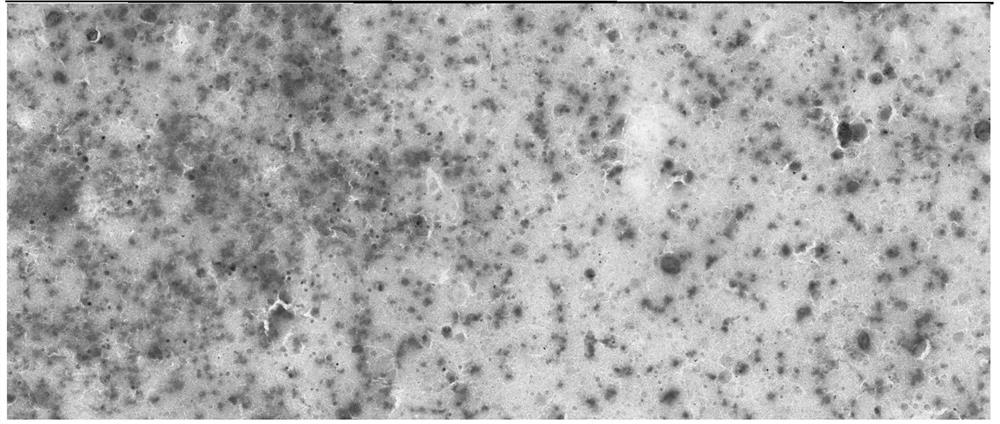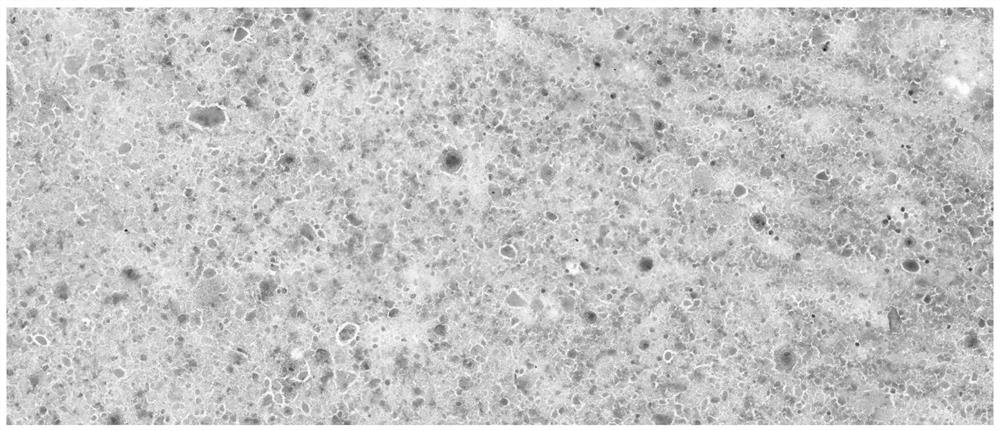Method for separating and extracting cells from bronchoalveolar lavage fluid
A technology of alveolar lavage fluid and bronchi, applied in cell dissociation methods, blood/immune system cells, animal cells, etc., can solve problems such as inability to culture and affect cell separation
- Summary
- Abstract
- Description
- Claims
- Application Information
AI Technical Summary
Problems solved by technology
Method used
Image
Examples
Embodiment 1
[0057] After the alveolar lavage fluid was taken from the patient with alveolar proteinosis, it was quickly transferred to a 4°C environment for storage, and then transferred to the laboratory as soon as possible. Filter the lavage solution with 4 layers of sterile gauze to remove impurities such as sputum and large sediment in the airway. The filtered lavage fluid was centrifuged at 500×g for 5 min. The resulting pellet was resuspended in PBS buffer containing 2% FBS. The suspension was centrifuged with a Percoll density gradient (composed of equal volumes of 30% and 60% Percoll layering solution), and the centrifugation conditions were 1500×g, 15min, increasing speed 6×g, decreasing speed 2×g. After successful centrifugation, the uppermost layer is the precipitation of surface active substances, and the cell layer is in the middle of the Percoll layer. The cells were washed with 5 times the volume of PBS buffer with a pH value of 7.4 and then centrifuged, and the erythrocy...
Embodiment 2
[0060] After the alveolar lavage fluid was taken from the patient with alveolar proteinosis, it was quickly transferred to a 4°C environment for storage, and then transferred to the laboratory as soon as possible. Filter the lavage solution with 5 layers of sterile gauze to remove impurities such as sputum and large sediment in the airway. The filtered lavage fluid was centrifuged at 500×g for 5 min. The resulting pellet was resuspended in PBS buffer containing 2% FBS. With a Percoll density gradient (consisting of equal volumes of 30% and 60% Percoll layers), the suspension was centrifuged under the conditions of 1400×g, 18min, increasing speed 4×g, and decreasing speed 1×g. After successful centrifugation, the uppermost layer is the precipitation of surface active substances, and the cell layer is in the middle of the Percoll layer. The cells were washed with 5 times the volume of PBS buffer with a pH value of 7.4 and then centrifuged, and the erythrocytes were lysed 1 to ...
Embodiment 3
[0062] After the alveolar lavage fluid was taken from the patient with alveolar proteinosis, it was quickly transferred to a 4°C environment for storage, and then transferred to the laboratory as soon as possible. Filter the lavage solution with 5 layers of sterile gauze to remove impurities such as sputum and large sediment in the airway. The filtered lavage fluid was centrifuged at 500×g for 5 min. The resulting pellet was resuspended in PBS buffer containing 2% FBS. The suspension was centrifuged with a Percoll density gradient (composed of equal volumes of 40% and 80% Percoll layering solution), and the centrifugation conditions were 1600×g, 12min, increasing speed 5×g, decreasing speed 2×g. After successful centrifugation, the uppermost layer is the precipitation of surface active substances, and the cell layer is in the middle of the Percoll layer. The cells were washed with 5 times the volume of PBS buffer solution with a pH value of 7.4, and then centrifuged, and the...
PUM
 Login to View More
Login to View More Abstract
Description
Claims
Application Information
 Login to View More
Login to View More - R&D
- Intellectual Property
- Life Sciences
- Materials
- Tech Scout
- Unparalleled Data Quality
- Higher Quality Content
- 60% Fewer Hallucinations
Browse by: Latest US Patents, China's latest patents, Technical Efficacy Thesaurus, Application Domain, Technology Topic, Popular Technical Reports.
© 2025 PatSnap. All rights reserved.Legal|Privacy policy|Modern Slavery Act Transparency Statement|Sitemap|About US| Contact US: help@patsnap.com



